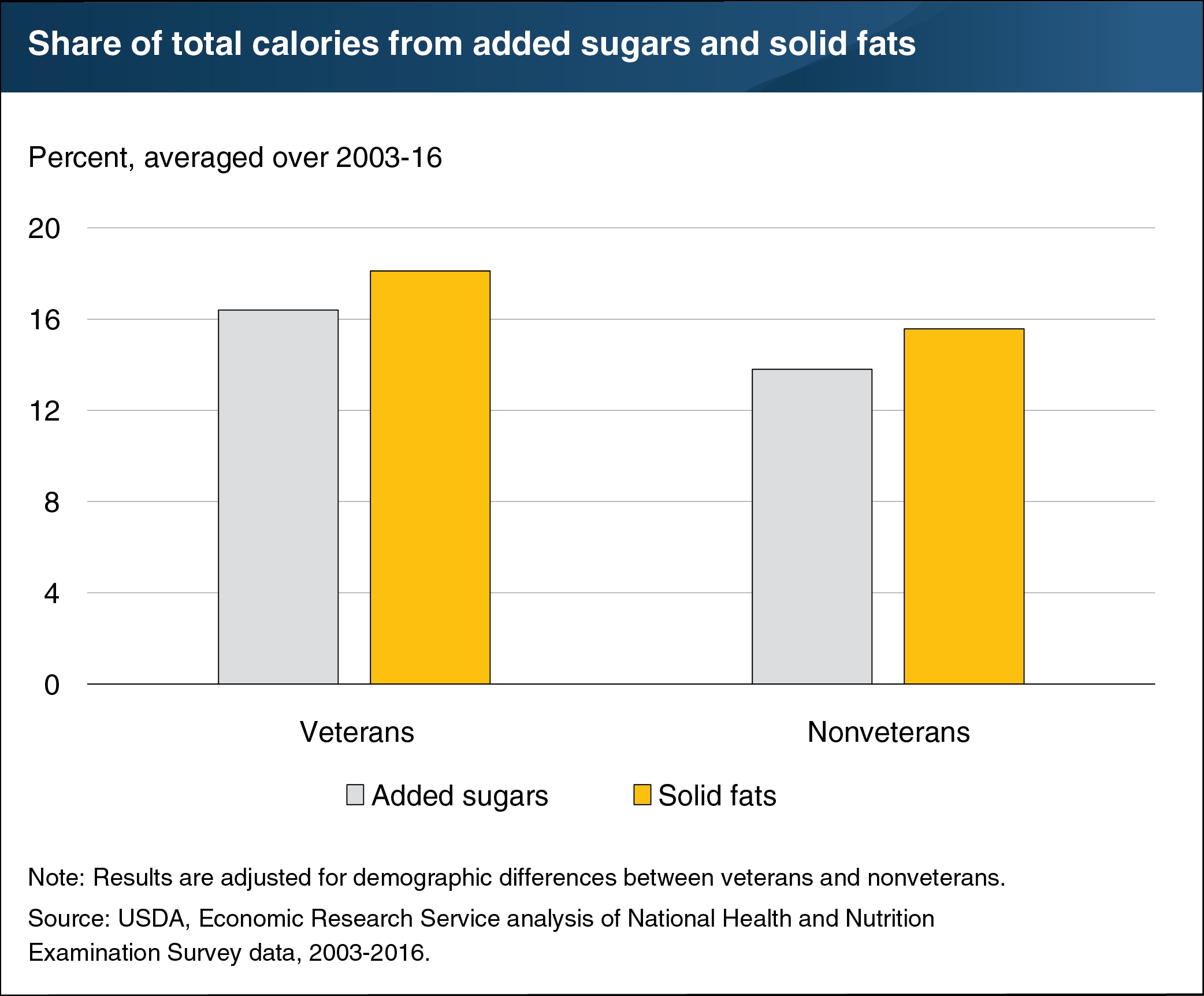Veterans consume a higher share of calories from added sugars and solid fats than nonveterans
- by Hayden Stewart, Diansheng Dong and Rosanna Mentzer Morrison
- 1/15/2020

In a recent study, ERS researchers used self-reported food intake data to explore how veterans’ diets compare with those of nonveterans. The researchers found that, much like other Americans, veterans do not closely follow healthy eating recommendations in the Dietary Guidelines for Americans, jointly issued every 5 years by USDA and the Department of Health and Human Services. Veterans were found to have somewhat lower quality diets than nonveterans after controlling for demographic differences, such as the fact that veterans tend to be older and are more often male. Veterans’ lower diet quality was primarily due to their higher consumption of calories from added sugars and solid fats. Between 2003 and 2016, added sugars represented 16.4 percent of total calories for veterans, on average, versus 13.8 percent for demographically similar nonveterans. Added sugars include cane and beet sugar, syrups, and other caloric sweeteners. The Dietary Guidelines encourages individuals to keep calories from added sugars below 10 percent of total calories. Veterans obtained another 18.1 percent of their total calories from solid fats, as compared with 15.6 percent for nonveterans. Solid fats are the fats found in meats, poultry, dairy products, hydrogenated vegetable oils, and some tropical oils. The data for this chart come from the ERS report, An Examination of Veterans’ Diet Quality, December 2019.

